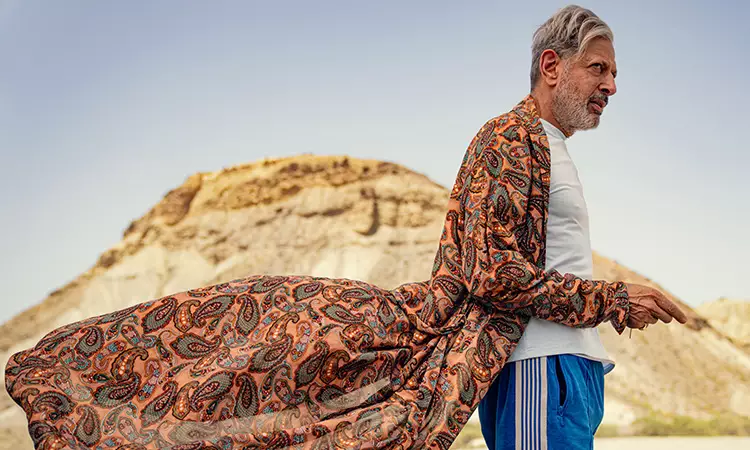In recent years, streaming platforms have increasingly turned their gaze towards the realms of mythology, seeking to reinterpret ancient tales through contemporary lenses. Netflix’s latest venture, “Kaos,” adds to this trend, joining the ranks of offerings like Amazon’s adaptations of Neil Gaiman’s works and Disney+’s take on Percy Jackson. While the fascination with gods and their stories is not new, “Kaos” stands apart by infusing classic narratives with urbanity and humor, simultaneously honoring the source material while making it accessible to a Gen-Z audience.
At the heart of “Kaos” lies an intriguing premise: Zeus, portrayed by the ever-charismatic Jeff Goldblum, is depicted as an insecure and often paranoid ruler who thrives on human adoration, primarily through sacrificial offerings. This characterization enriches the narrative, as it reveals a frail side to a figure often glorified in traditional lore. However, discontent brews amongst the human populace, leading to rebellions against their deities. The series skillfully interweaves multiple storylines, which collectively enhance the overarching theme of struggle between mortals and immortals, showcasing humanity’s evolution away from blind reverence.
The artistic choice to embed these timeless tales in a modern context presses upon the viewer an appreciation for both the absurdity and the relatability of Greek mythology. The crumbling hierarchical structure of Olympus reflects our contemporary world—a world rife with political chaos and distrust in authority figures, this viewing resonates strongly with today’s audiences.
“Kaos” introduces an impressive ensemble of characters from the Greek pantheon, including Theseus, Orpheus, and Eurydice. However, rather than mere caricatures of their mythological origins, these characters are imbued with depth and agency. Aurora Perrineau’s portrayal of Riddy, the reimagined Eurydice, is particularly notable, manifesting a character that actively shapes her own destiny rather than merely falling victim to it.
Goldblum’s Zeus is complemented by Janet McTeer, who embodies Hera with sharp wit and command. The dynamic between these two pivotal figures showcases the complex familial relationships frequently explored in mythology while adding layers of humor and drama that enhance the narrative. Their interplay illustrates the tension between power and vulnerability, making the divine feel more accessible and relatable.
Stephen Dillane’s Prometheus serves as an engaging narrative thread, commenting on the unfolding events while reinforcing the narrative’s interconnectedness. This technique proves effective in blending stories, drawing otherwise disparate narratives together into a cohesive exploration of fate and free will.
Aesthetically, “Kaos” grabs hold of its audience with a striking visual palette that fuses bright colors with modern motifs. This juxtaposition of ancient mythos and contemporary design choices creates a vibrant world teeming with life. The visual elements effectively mirror the characters’ complex emotions, and the series’ tone oscillates between lighthearted humor and introspective depth.
Moreover, “Kaos” does not shy away from addressing themes of sexual fluidity and diversity. By embracing and celebrating inclusion in its casting and storytelling, the show not only broadens its appeal but also gives a nod to the sexually liberated narratives of ancient Greece. This aspect of the storytelling is a significant evolution, demonstrating that modern adaptations can resonate on multiple levels, engaging diverse audiences through thoughtful representation.
“Kaos” is not merely a retelling of ancient myths; rather, it is a vibrant reconstruction that invites audiences to question the very nature of divinity and humanity. It conveys an essential critique of power structures while celebrating the diversity and complexity inherent in human stories. By fashioning these ancient tales through a modern lens, Netflix’s “Kaos” emerges as a refreshing contribution to the landscape of mythological narratives, echoing the timeless nature of the human experience and inviting viewers to indulge in the chaos of existence. As such, it beautifully bridges the gaps between past and present, providing a rich tapestry that resonates with a broad spectrum of viewers.

